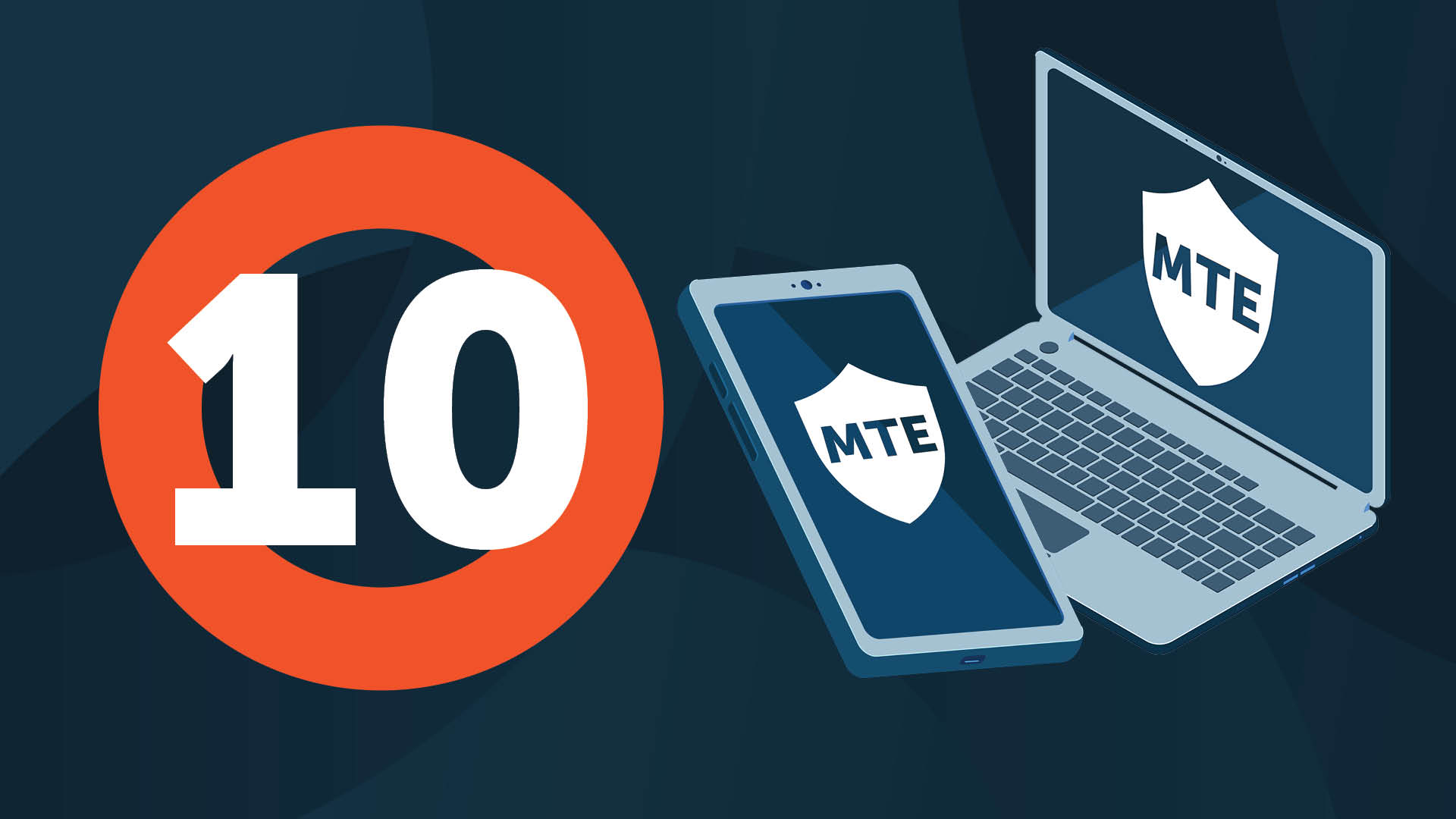
There are two types of businesses out there: those that have experienced a cyber attack and those that will.
Mobile and web security have increased significantly over the years and with employees gaining more access to their company’s data through smartphones, PCs, tablets, etc., it is critical to address cyber threats right away. We listed 10 of the top mobile and web cyber threats that MTE technology can protect against.
-
Malware
Malicious applications make up a large percentage of security threats that employees bring to a business. This includes malicious software that is installed on a device without the user’s consent. Examples of threats that malware might introduce are session hijacking, IP spoofing, replay attacks, and keystroke loggers. How MTE solves this: MTE technology protects data at the application layer, before it is sent to the operating system where malware resides, making the data is unusable to the attacker if the device is infected.
-
Jailbroken / Rooted Devices
Rooted or jailbroken devices allow applications to have root access on the device. If malicious software is installed—willingly or otherwise—then the malware can also gain access to the root and have complete access to all data on the device and override security features built into the operating systems.
-
Deepfake / Synthetic Identities
When facial recognition is used as part of the authentication process to gain access to websites, mobile devices, ATMs, etc., fake images can be used instead to fool the system. How MTE solves this: MTE protects devices by only allowing uniquely paired endpoints to send/receive discernable values and enhances the organization’s zero-trust initiatives. The attacker would not be able to send data from their device even though they defeated through the authentication step because they do not have the pairing to the endpoint.
-
Brute Force / Quantum Hacking
Attackers can defeat encryption algorithms and/or reproduce using brute force, compromising encryption keys, or compromising public keys to figure out the private keys. Additionally, all these attacks will be faster and easier with quantum computers. Once the key is found, then all the data is usable. How MTE solves this: Before data is secured with either MTE or MKE it is randomly obfuscated, creating a payload that has no correlation to the original data. This makes it almost impossible for an attacker to know if they have successfully brute-forced the data because all data cues have been removed. Furthermore, Eclypses’ Managed Key Encryption solution uses MTE to create a single-use instantly obsolete key that is never shared with the receiving endpoint, never sent in a packet, and never contacts a third-party repository for a key. Because it is used for individual pieces of data, quantum hackers would have to uniquely hack every transmission.
-
Password Attack
Many users fail to protect their accounts with strong passwords, making it easier for cyber attackers to figure out and get into their devices, gain access to their employers’ systems, and even gain access to websites and web-based portfolios, and financial accounts. With techniques like Brute Force Guessing, dictionary attacks, and files with commonly used passwords, hackers have tools to quickly find the right combo. How MTE solves this: MTE uniquely pairs the endpoints on mobile devices and on web browsers before any username/passwords are entered. Once pairing occurs, only the device or browser session can discern values sent back and forth. When an attacker tries to guess, the device or browser session has no ability to communicate — even if the password has been guessed correctly.
-
Third-Party Applications
Most device users have multiple applications installed that may or may not be used. Individual applications do not have control over the “other” installed applications but could be compromised or infected with viruses. They might even contain malware themselves and therefore infect other applications or spread viruses. This exposes all software on the device to attack surfaces beyond the control of software applications following best security practices. How MTE solves this: MTE creates unique pairings for each endpoint from the software application that the organization controls. Only paired endpoints can ever send discernable data packets—even if third-party software has been compromised. Third-party applications that are infected could never determine the data moving from MTE protected applications.
-
Unsecured Wi-Fi
Wi-Fi networks that are free in public settings like libraries, coffee shops, airports, restaurants are nice to avoid using your mobile data. However, these networks have insufficient security in place. Attackers often monitor data traffic and packets sent from applications over these networks, which include username/password combinations, making it easy to gain access to your sensitive data. How MTE solves this: MTE creates unique pairings for each endpoint from the software application that the organization controls. Only paired endpoints can ever send discernable data packets—even if Wi-Fi has been hacked. Even data entered into a browser is protected for every transmission—not just for the session.
-
SIM Swapping
Attackers convince carriers to switch your phone number to a SIM card owned by the attacker. Attackers even recruit and pay customer service representatives to participate in the scam. If the SIM is swapped, then the attacker now gains access to personal data. How MTE solves this: MTE is an additional method that can replace the need for physical fobs and enhance the PIN and 2nd Factor Authentication requirement. Endpoints are uniquely paired based on non-replicable values between each device. Then, if someone uses fake SIM cards, any application that uses MTE would not be usable and the endpoint pairing is intentionally corrupted resulting in useless data packets created.
-
Network Spoofing
Fake Wi-Fi connections that are created as traps entice a user to create an account and provide a username and password. The attacker then tries this username/password combination to gain access to other accounts. They also monitor data moving across sessions in these fake connections. How MTE solves this: Sensitive applications or browser-connected sessions that use MTE will not reveal data on these insecure networks even if the user is fooled into joining a fake access point. All data from MTE secured applications are not usable and all MTE endpoints are secure.
-
Operating System Defaults
Operating systems on devices have security methods, but they are rather basic and often open-source. Individual users can even override the security features intentionally by jailbreaking/rooting their devices. These securities often focus on protecting the application and not the data that the applications create or send. How MTE solves this: MTE protects data before it even is sent to the operating system where malware resides. Since MTE technology generates instantly obsolete, random streams of values to replace any form of data, the data is meaningless to the attacker if the device is infected with malware. The MTE is also compiled within the application itself and all data is secured the moment the data is created and does not wait for the packet to be sent.
Offense is the best defense. If cyber attackers gain access to your data with MTE, they will only see instantly obsolete, random streams of values, making the data completely meaningless to the attacker. Ask yourself: will my business be ready for one of these cyber-attacks?


